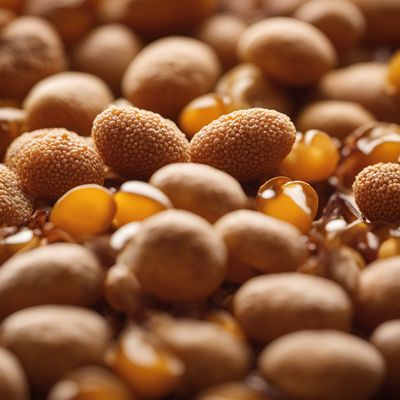
Ingredient
Sprat
The Tiny Flavor Bomb: Sprat
Sprat is a small fish belonging to the herring family. It has a silvery-blue color with a slender body and a delicate texture. The flavor of sprat is rich, briny, and slightly fishy, making it a favorite choice for smoking, pickling, or frying.
Origins and history
Sprat has been consumed for centuries and has a long history in European and Asian cuisines. It is particularly popular in Baltic and Scandinavian countries, where it is often used in traditional dishes such as sprat sandwiches and smoked sprat spreads. Sprat is also a common ingredient in Russian and Ukrainian cuisines.
Nutritional information
Sprat is a good source of omega-3 fatty acids, which are beneficial for heart health. It is also rich in protein and contains essential vitamins and minerals such as vitamin D and selenium. A 3-ounce (85g) serving of sprat provides approximately 150 calories.
Allergens
Sprat is a fish and may cause allergic reactions in individuals with fish allergies. It is important to exercise caution and avoid consumption if allergic.
How to select
When selecting sprat, look for fish that have clear, bright eyes, shiny skin, and a fresh, oceanic smell. The flesh should be firm and resilient to the touch. Avoid fish that have a strong fishy odor or signs of discoloration.
Storage recommendations
To maintain the freshness of sprat, it is best to consume it as soon as possible after purchase. If storing, keep the fish refrigerated at a temperature between 32°F and 38°F (0°C and 3°C). Wrap it tightly in plastic wrap or place it in an airtight container to prevent moisture loss and protect it from other odors in the refrigerator.
How to produce
Sprat is typically caught in the wild and is not commonly produced through aquaculture. However, it is possible to catch sprat using fishing nets or lines in coastal areas or purchase them from local fishermen or seafood markets.
Preparation tips
Sprat can be prepared in various ways, including smoking, pickling, frying, or grilling. It is often used in salads, spreads, or as a topping for pizzas and sandwiches. When frying sprat, coat it in flour or breadcrumbs for a crispy texture. Pair it with lemon, herbs, or a tangy sauce to balance its rich flavor.
Culinary uses
Sprat is commonly used in Baltic and Scandinavian cuisines. It is often smoked, pickled, or fried and served as a snack, appetizer, or part of a main course. Sprat sandwiches are a popular street food in many coastal cities. In Russian and Ukrainian cuisines, sprat is used in various dishes, including salads, spreads, and pies.
Availability
Sprat is commonly available in coastal regions of the Baltic Sea, North Sea, and the Atlantic Ocean. It is also found in some freshwater lakes and rivers. Countries such as Latvia, Lithuania, Estonia, Sweden, and Russia are known for their sprat fisheries.



